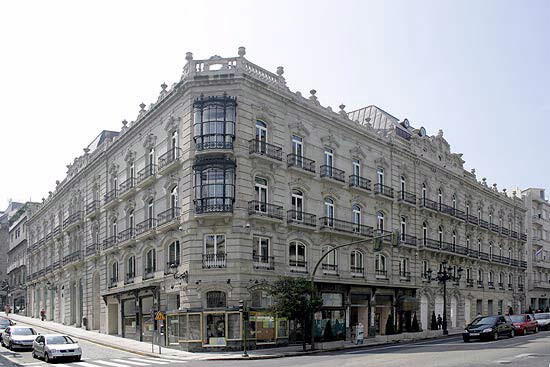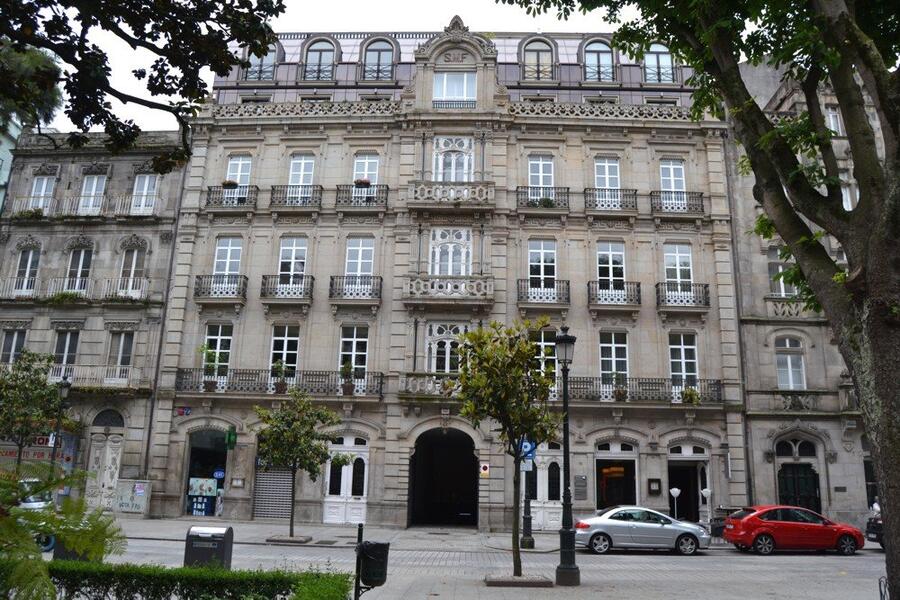Conjunto Histórico - Artístico de Vigo
Transports le plus proche:
Ville la plus proche:
Pontevedra
Vigo Pontevedra
Spain
Teléfono
This is the story of how a ‘Vicus’ or small village became the largest Galician city. It is the product of a rapid process of industrialisation, the development of fishing, and population movements to the coast. In the 16th century, the O Castro Mountain and the A Laxe area lived through various processes of construction and deconstruction due to invasions, lootings, fires, plague outbreaks and population declines. A much anticipated fortification was built a century later, but the construction of the walls brought about the demolition of other buildings and reduced the space inside the city.
Today the most interesting monument route starts at the Puerta del Sol, but before getting there we can appreciate the eclectic architecture of the Urzaiz, Colón, Areal, Policarpo Sanz and Príncipe streets (the last one pedestrian). Examples of this remarkable type of architecture are the Casas de Bonín and the García Barbón Theatre, designed by architects Jenaro de la Fuente and Antonio Palacios respectively, who among others contributed significantly to the expansion of Vigo at the beginning of the last century.
In the Constitución square, where the former Council was located, the Cestos street leads to the Old Town. Nearby is the Santa María Co-Cathedral, in the sober neoclassic style, and towards the coastline is the O Berbés neighbourhood, with its characteristic porticoed fishermen's houses.
Notez cette ressource
Le temps dans cette région
Chiffres de protection
Monument historique et artistique
Langue
Gallego
Espagnol
Anglais
Visites guidées
Gallego
Espagnol
Anglais
Intérêt paysager des environs
Surélevé
Description de l'environnement
Urbain
Organisme responsable
Concello de Vigo
Propriété
Public
État de conservation
Bon













